I have just started working with JTable. This is my table example. The add row button adds rows to the table. I want to create row headers for this table. How can I achieve this?
Can any one help me please?
The code for the sample table is:
package test;
import javax.swing.*;
import java.awt.*;
import java.awt.event.ActionEvent;
import java.awt.event.ActionListener;
import java.awt.event.ItemEvent;
import java.awt.event.ItemListener;
import javax.swing.table.*;
import test.InsertRows.CellEditor;
public class SampleTable extends JFrame {
JTable table;
JPanel panel;
DefaultTableModel dataModel;
public SampleTable () {
super("My Table Example");
setDefaultCloseOperation(JFrame.EXIT_ON_CLOSE);
onInit();
}
void onInit()
{
JButton b=new JButton("Add Row");
b.addActionListener(new ActionListener() {
@Override
public void actionPerformed(ActionEvent e)
{
// TODO Auto-generated method stub
insertNewRow();
}
});
panel = new JPanel(new BorderLayout());
String[] columnNames = {
"Name",
"OID",
"Index",
"Value",
};
Object[][] data = {
{"sysLocation","1.3.6.1.2.1.1.6","0",""},
{"sysContact","1.3.6.1.2.1.1.4","0",""},
{"sysDescr","1.3.6.1.2.1.1.1","0",""}
};
dataModel = new DefaultTableModel();
for (int col = 0; col < columnNames.length; col++) {
dataModel.addColumn(columnNames[col]);
}
for (int row = 0; row < 3; row++) {
dataModel.addRow(data[row]);
}
table = new JTable(dataModel);
table.setDefaultEditor(Object.class, new CellEditor(this, table));
table.setPreferredScrollableViewportSize(new Dimension(600, 120));
table.setFillsViewportHeight(true);
//Create the scroll pane and add the table to it.
JScrollPane scrollPane = new JScrollPane(table);
//Add the scroll pane to this panel.
panel.add(scrollPane,BorderLayout.CENTER);
panel.add(b,BorderLayout.SOUTH);
panel.setOpaque(true); //content panes must be opaque
setContentPane(panel);
//Display the window.
pack();
setVisible(true);
}
public static void main(String[] args) {
SampleTable myFrame = new SampleTable();
}
private void insertNewRow()
{
if(vaidCheck(table)){
dataModel.insertRow(table.getRowCount(),
new Object[] {"", "", "", ""}
);
dataModel.fireTableRowsInserted(
dataModel.getRowCount(),
dataModel.getRowCount()
);
}
else{
JOptionPane.showMessageDialog(null,"Field is empty");
}
}
public boolean vaidCheck(JTable table)
{
if(table.getCellEditor()!=null){
table.getCellEditor().stopCellEditing();
}
for(int row=0;row< table.getRowCount();row++){
for (int col=0;col<table.getColumnCount();col++){
String om=table.getValueAt(row,col).toString();
if(om.trim().length()==0){
return false;
}
}
}
return true;
}
public class CellEditor extends DefaultCellEditor
{
/**
*
*/
private static final long serialVersionUID = 1L;
private JTable m_Table = null;
public CellEditor(JFrame parentFrame, JTable table) {
super(new JTextField());
super.setClickCountToStart(1);
m_Table = table;
}
@Override
public Component getTableCellEditorComponent(JTable table, Object value, boolean isSelected, final int row, int column)
{
if(column == 0){
Object[] objectArray = {"Nikhil","Nijil"};
JComboBox comboBox = new JComboBox(objectArray);
comboBox.setEditable(true);
comboBox.setSelectedItem(value);
ItemListener itemListener = new ItemListener() {
public void itemStateChanged(ItemEvent e) {
if(e.getStateChange() == ItemEvent.SELECTED) {
if(null != m_Table.getCellEditor()){
m_Table.getCellEditor().stopCellEditing();
}
m_Table.setValueAt(e.getItem(), row, 0);
}
}
};
comboBox.addItemListener(itemListener);
return comboBox;
}
if(column == 2){
}
JTextField textField = (JTextField)super.getTableCellEditorComponent(table, value, isSelected, row, column);
return textField;
}
}
}

